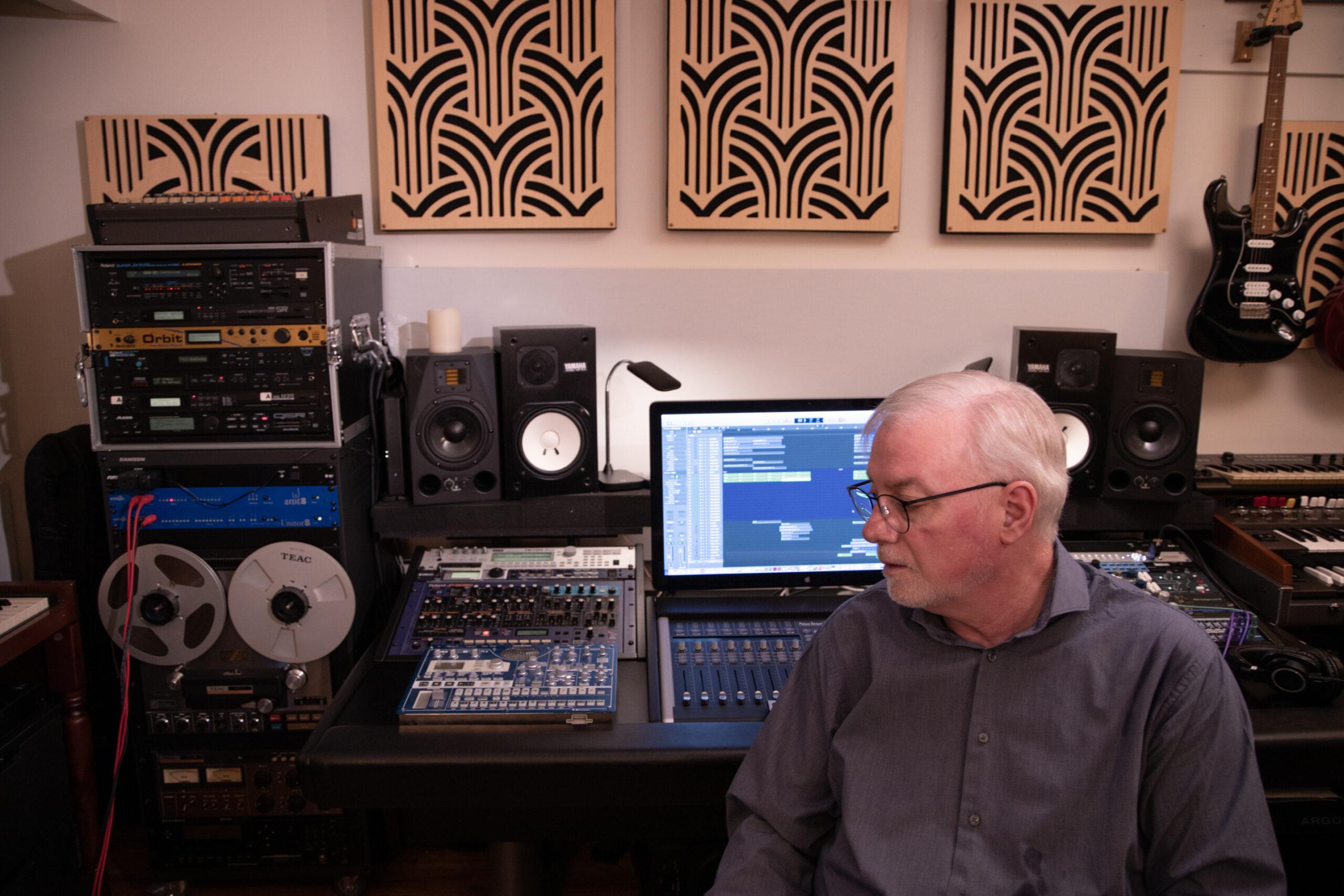The Art of Sound Design by Les Merson: Crafting Sonic Landscapes Like No Other

In the world of music production, sound design is the unsung hero—an art form that shapes the emotional essence of a track, elevating it from mere notes to a fully immersive experience. Few people understand this better than Les Merson, a name that has come to symbolize innovative sound design that defies expectations. As a music producer, composer, and sound designer, Merson’s ability to sculpt intricate soundscapes has made him one of the most sought-after artists in his field. His work is a testament to the belief that sound is not just something we hear, but something we feel.
In this blog, we’ll take an in-depth look at sound design by Les Merson, exploring the techniques, philosophy, and passion behind his approach to creating sound that resonates. Whether you’re an aspiring sound designer, a music enthusiast, or someone who’s simply curious about how sound can transform a song, Merson’s unique take on sound design is sure to captivate you. So let’s dive into the world of Les Merson’s sonic mastery.
Les Merson: The Maestro Behind the Sound
Les Merson’s name might be most closely associated with his role as a music producer, but his expertise goes far beyond traditional production. Merson has an uncanny ability to create sounds from scratch—sounds that feel natural, emotional, and dynamic. His work as a sound designer is where his true artistry shines. Whether it's crafting ambient textures, designing intricate synth sounds, or manipulating samples in ways that feel fresh and innovative, Merson’s approach to sound design has a signature quality that sets it apart from others in the field.
From his early days of experimentation in home studios to his current collaborations with top-tier artists, Merson has always treated sound design as a crucial part of the creative process. Unlike many producers who rely on pre-made sounds or preset instruments, Merson prides himself on creating original, unique sounds that push the boundaries of what music can be.
Sound Design: The Unseen Force Behind the Music
When most people think of music production, they focus on melodies, lyrics, and the final mix. However, sound design is the often-overlooked art of creating and shaping the individual sounds that make up a track. It’s about crafting sonic textures, manipulating audio samples, and experimenting with synthesizers and effects to generate new, immersive sounds.
In essence, sound design is the building block of any track. It can transform a simple melody into something that feels otherworldly, evoke emotions that lyrics alone cannot, or provide the perfect backdrop for an artist’s performance. It’s the force that makes music come alive and resonate with the listener on a deeper level. And no one understands this better than Les Merson.
The Core Philosophy of Sound Design by Les Merson
When it comes to sound design, Merson’s philosophy is rooted in one simple idea: sound should tell a story. This approach is what sets his work apart and makes it so impactful. For Merson, sound is more than just an element of music—it’s a form of communication, a medium through which emotions, thoughts, and experiences are conveyed.
Rather than approaching sound design in a technical sense, Merson starts with the emotional essence of the track. What is the song trying to communicate? What feeling should the listener experience? These questions guide Merson’s creative process, allowing him to design sounds that perfectly align with the mood, theme, and narrative of the music.
This philosophy can be seen in many of Merson’s projects, where he skillfully manipulates sound to evoke specific emotions or atmospheres. Whether he’s creating an eerie, tension-building soundscape for a cinematic piece or crafting uplifting, vibrant textures for a dance track, Merson’s ability to align sound with emotion is what makes his designs so effective.
The Techniques and Tools Behind Les Merson’s Sound Design
So, how does Les Merson bring his sound design philosophy to life? His techniques and tools are as diverse as the sounds he creates. Over the years, Merson has developed a vast toolkit of instruments, software, and creative methods that enable him to shape sound in ways that few can.
1. Analog and Digital Synthesis
One of Merson’s go-to techniques is the use of both analog and digital synthesizers. While digital synths are great for precision and flexibility, Merson often turns to analog synths for their warmth and organic quality. By combining these two technologies, he’s able to create sounds that feel both modern and timeless, with the depth and character that only analog instruments can provide.
Whether he’s layering rich, atmospheric pads or crafting intricate basslines, Merson knows how to make the most of both analog and digital worlds. This fusion of old and new allows him to produce sounds that stand out, both sonically and emotionally.
2. Sampling and Resampling
Another signature technique in Les Merson’s sound design arsenal is sampling—and then resampling those samples. Merson often begins by sampling sounds from everyday objects, field recordings, or even classic tracks, which he then processes, manipulates, and re-contextualizes into something entirely new. This process allows him to breathe new life into ordinary sounds, transforming them into unique sonic textures that become the foundation of his tracks.
Resampling—taking the output of one sound and manipulating it further—is a technique Merson often uses to create complex layers of sound that evolve over time. The process might involve pitching sounds up or down, stretching them, or applying various effects like reverb, distortion, or filtering. By doing this, Merson can create rich, multi-dimensional soundscapes that maintain a sense of movement and change throughout the track.
3. Field Recording and Organic Sounds
Merson also brings a sense of realism and raw energy into his sound design by incorporating field recordings into his work. Whether it’s the sound of a busy street, nature’s ambient noise, or the subtle hum of machinery, these organic sounds add texture and richness to the sonic landscape. The incorporation of such sounds makes the music feel grounded, as if it’s not just coming from a studio but is part of the environment in which the listener lives.
This attention to real-world sounds allows Merson to create sonic environments that are both immersive and dynamic. For example, in a cinematic track, the sound of wind blowing or birds chirping can subtly enhance the emotional tone, adding a sense of place or depth to the composition.
4. Manipulating Effects for Atmosphere
To add further depth and atmosphere to his tracks, Merson is not afraid to get creative with effects processing. Reverb, delay, distortion, and modulation are all tools he uses to manipulate sound and create unique textures. These effects help set the mood of a track, whether it’s adding a sense of space and airiness with reverb or distorting sounds to create tension and discomfort.
One of Merson’s talents is his ability to use effects in a way that feels organic, not overdone. Each effect serves a purpose—whether it’s to enhance the sound or evoke a certain emotional response—and is carefully tailored to the track’s overall vibe. This attention to detail ensures that the sound design never feels intrusive or overwhelming, but instead feels like a natural extension of the music.
5. Layering and Complex Arrangements
Another hallmark of Merson’s sound design is his ability to create intricate, layered arrangements. Whether he’s building a wall of sound with multiple layers of synths, pads, and percussion or creating a sparse, minimalistic soundscape, Merson knows how to balance complexity and clarity. His ability to build textures gradually, adding layer after layer of sonic elements, creates a sense of progression and movement within the track.
This technique is especially effective in cinematic and atmospheric compositions, where the layering of different sounds can help tell a story or evoke a particular emotion. By carefully arranging and layering sounds, Merson creates a sense of space and depth that invites the listener into his sonic world.
How Sound Design Elevates Merson’s Music
It’s not just the individual sounds that make Merson’s work exceptional—it’s how they work together to form a cohesive sonic landscape. The way Merson uses sound design to enhance his music is a testament to his deep understanding of how sound affects the listener’s emotions and perception.
In many of his tracks, Merson uses sound to guide the emotional journey of the listener. Whether he’s building tension through dissonant frequencies or providing a sense of resolution with harmonically rich pads, the sound design is integral to the way the music feels. His tracks are dynamic, evolving over time, with layers of sound that keep the listener engaged from start to finish.
Moreover, Merson’s sound design helps shape the identity of the artist he’s working with. Whether he’s working with a solo artist or a band, Merson’s ability to craft unique sounds ensures that each project has its own sonic fingerprint. His sound designs help to define the mood and aesthetic of the music, making each track feel like a unique sonic experience.
Final Thoughts
Sound design by Les Merson is more than just a technical skill—it’s an art form that transforms music into a sensory experience. Through his innovative techniques, Merson has redefined the role of sound design in music production, showing that it’s not just about creating pleasing sounds, but about crafting emotional and narrative landscapes that resonate deeply with the listener.
From his use of analog and digital synths to his masterful manipulation of samples, field recordings, and effects, Merson’s sound design is a testament to the power of sonic storytelling. Whether you’re listening to a track he’s produced or experiencing one of his cinematic soundscapes, the depth, emotion, and creativity in his work are undeniable.







